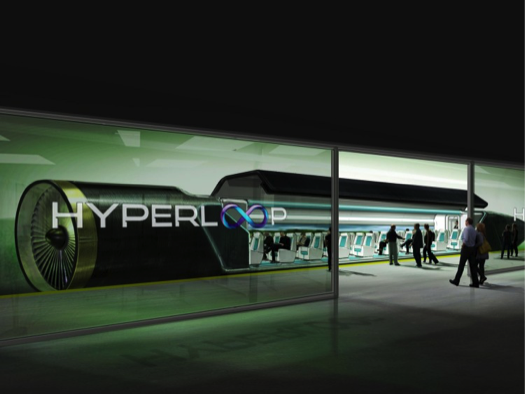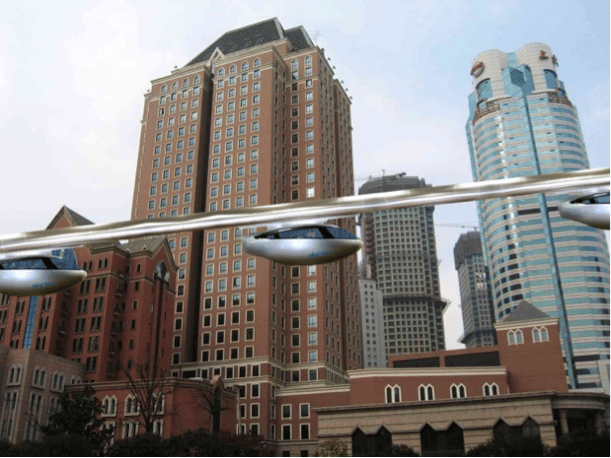Commuting would be soooooo much easier if we could just strap on a personal jetpack and fly right over all the traffic. It could combat that problem of chronic tardiness (although the downside would be helmet hair).
As we wait for the jetpacks, here’s a look at some other innovative solutions that will cut future commute times significantly. Though they may look like science fiction, they are actually in development now and will be carrying passengers within a decade.
The SkyTran Monorail
According to the website Like the Future, the world’s first SkyTran monorail is set to open in Lagos, Nigeria by 2020. Commuters will ride in in steel and aluminum pods that hang from a magnetic track hovering 20 feet in the air, high above traffic. The system uses maglev technology that utilizes gravity, a magnet and short bursts of electricity to make the pods glide and accelerate on the track using about the same amount of electricity as two hair dryers.
For only slightly more than the cost of a typical subway or light rail pass, passengers will catch a ride in a 2- or 4-person pod from stations around the city. Instead of running on a specific schedule, the pods will be summoned on demand. Riders will be able to book rides using an app to hail the first open pod coming along.
The Hyperloop

Instead of flying above the city, another option is to be propelled through a tube faster than the speed of sound. Using magnets to levitate multi-passenger pods inside an airless tube, the Hyperloop will be able to ferry people and cargo at speeds up to 760 mph. Developers say the new mode of transportation is something between a plane and a train, and the experience will be similar to flying in a jet, only faster. Passengers could conceivably commute between San Francisco and Los Angeles in 30 minutes or from Toronto to Vancouver (about 2,700 miles) in only 3 hours.
As our cities grown into mega-cities, the Hyperloop will enable people to move farther from city centers and commute long distances efficiently, safely, sustainably and quickly. Both companies developing the technology expect to transport cargo by 2020 and passengers by 2021.
Other major benefits of the SkyTran and Hyperloop technologies are that they are cheaper to build than traditional transit systems and highways, are less disruptive to ground-level infrastructure, and use less energy.
So, while we eagerly await technology that will make the morning work commute feel like a theme-park joy ride, we’re pretty much stuck with fighting highways and traffic, taking transit, or working from home.
If you haven’t already checked out our tips for smoothing the commute, you can read it here. In our next blog, we’ll look at the commuter of the future.

